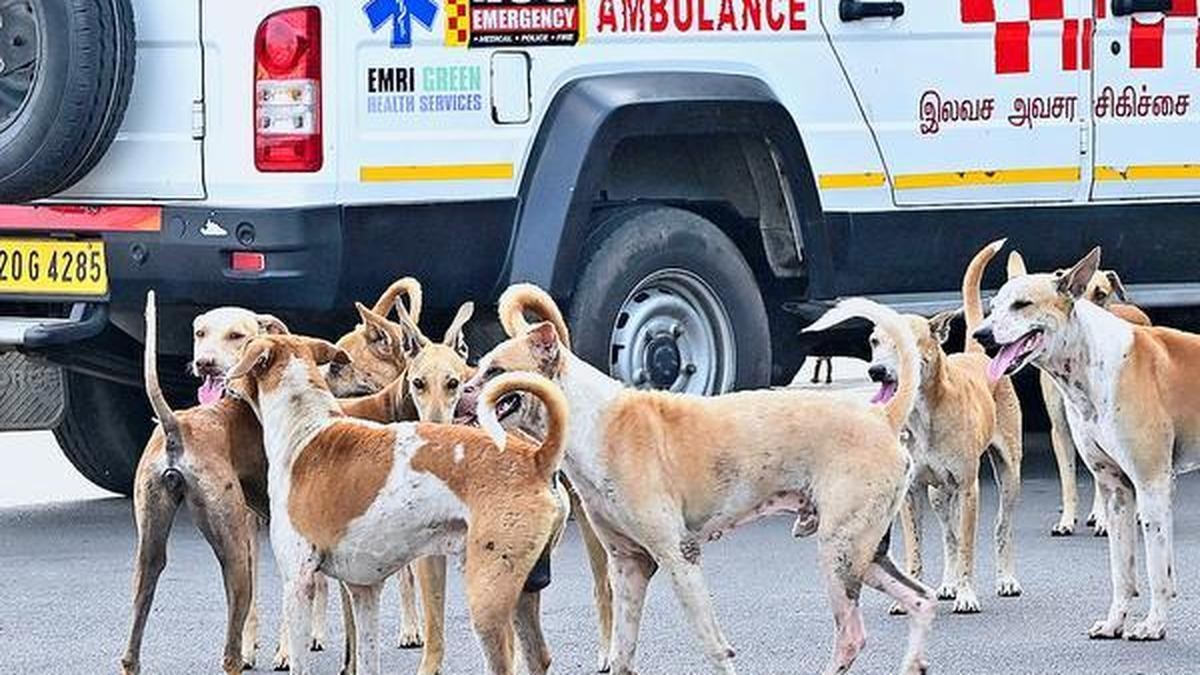



India’s rich biodiversity, harboring 8% of global species, supports sustainable food systems through neglected crops like millets and legumes. Reviving these nutrient-dense, climate-resilient crops via State missions and the Public Distribution System can enhance nutrition, cultural identity, and ecological balance, fostering an era of “biohappiness” for sustainable well-being.

Copyright infringement not intended
Picture Courtesy: THE HINDU
India's biodiversity and forgotten crops like millets can drive sustainable health, food security, and ecological balance for a prosperous future or Biohappiness.
The term "Biohappiness" was coined by the renowned agricultural scientist, Dr. M.S. Swaminathan, who is also known as the father of India's Green Revolution.
It refers to a state of well-being that can be achieved through a harmonious relationship with nature. This goes beyond just economic prosperity and includes:
India's Rich but Threatened Biodiversity
India is a "megadiverse" country, it covers only about 2% of the world's land area, but home to nearly 8% of the world's biodiversity. However, this natural wealth is under threat.
The rapid disappearance of agrobiodiversity, particularly in Northeast India.
The loss also means the extinction of traditional knowledge about the medicinal and nutritional properties of local plants, which has been passed down through generations in tribal communities.
Global food system is heavily reliant on just three crops: rice, wheat, and maize, together they provide over 50% of the world's plant-based calories. This over-reliance has several negative consequences:
For a long time, People have ignored locally grown crops like small millets, buckwheat, amaranth, and jackfruit. These have been labeled as "Neglected and Underutilized Species" (NUS). Experts advises that there is a need to accept them as "Opportunity Crops" because they are:
Dr. M.S. Swaminathan promoted the "Evergreen Revolution." Unlike the first Green Revolution, which focused on chemical intensification, the Evergreen Revolution aims to increase productivity while maintaining ecological balance and ensuring nutrition security. This involves:
|
Case Study M.S. Swaminathan Research Foundation (MSSRF): In the Kolli Hills of Tamil Nadu, the MSSRF has worked with farming communities, especially women, to revive millet cultivation. This has not only prevented the loss of crop diversity but also improved soil health, diversified crop production, and increased income for farmers. |
Odisha Millet Mission: This mission has successfully promoted the revival of millets from seed to consumption. It has also worked on including millets in the Public Distribution System (PDS).
The "Shree Anna" Initiative
Recognizing the importance of millets, the Union government launched the Shree Anna Yojana. This initiative, along with the UN's declaration of 2023 as the International Year of Millets, aims to:
The government is also providing financial assistance to millet processing units through schemes like the PM Formalization of Micro Food Processing Enterprises (PMFME).
Expand Millet Integration: Include millets in PDS and scale up state millet missions.
Strengthen Research Infrastructure: Invest in interdisciplinary biodiversity research centers.
Enhance Conservation Financing: Optimize the ₹816 billion annual biodiversity budget allocation.
Promote Community Participation: Scale successful community-led conservation models.
Develop Value Chains: Create robust processing and marketing infrastructure for indigenous crops.
International Collaboration: Leverage global partnerships for technology and knowledge exchange.
India, with its human resources and scientific infrastructure, has the potential to become a global leader in the sustainable use of natural resources, paving the way for an era of "Biohappiness."
Must Read Articles:
Source:
|
PRACTICE QUESTION Q. With reference to the 'Neglected and Underutilized Species (NUS)', also referred to as 'orphan crops', consider the following characteristics: 1. They are nutritionally dense. 2. They are well-adapted to local environments. 3. They have historically been preferred over popular commercial crops. 4. They are also referred to as 'opportunity crops'. Which of the characteristics given above are correct? A) 1 and 3 only B) 2 and 4 only C) 1, 2 and 4 only D) 1, 2, 3 and 4 Answer: C Explanation: Statement 1 is correct: NUS are rich in micronutrients, vitamins, protein, energy, and fiber, and can play a crucial role in combating malnutrition and "hidden hunger" (deficiency in essential vitamins and minerals). Many NUS have superior nutritional profiles compared to staple crops. Statement 2 is correct: NUS are native to the areas where they are grown and have adapted to diverse, often harsh and marginal, ecological conditions with minimal inputs. They exhibit traits like drought and salt tolerance, heat resistance, and resistance to local pests and diseases. Statement 3 is incorrect: NUS are, by definition, neglected and underutilized. While they were traditionally used for centuries, they became increasingly overlooked with the advent of more productive, commercial staple crops like rice, wheat, and maize, which now dominate global food systems. Statement 4 is correct: The term 'opportunity crops' is used to highlight their potential to improve food and nutritional security, enhance biodiversity, and support sustainable agriculture, despite being currently underutilized. These crops present opportunities to diversify food systems and build resilience. |









© 2026 iasgyan. All right reserved